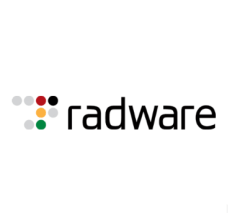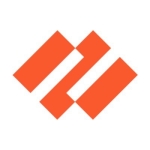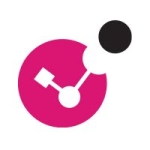What is our primary use case?
The use case is protection for all web applications. This includes the applications we serve via critical workloads. We are utilizing Radware Cloud WAF Service for this protection.
In addition to protecting our production environment, we also implement Layer 7 protections, DDoS protections, and other security measures. We have established a detailed level of protection for all of our applications.
How has it helped my organization?
I am satisfied with Radware Cloud WAF Service's ability to block unknown threats and attacks, as the moment we enable protection for specific applications, it starts working. For instance, we receive results indicating whether there's any unusual activity. This system operates like Software as a Service (SaaS). You don't have to worry about the underlying algorithms or the conditions that need to be applied. It's essentially a plug-and-play solution, making it easy to use.
The automated analytics of Radware Cloud WAF Service are quite effective. They inspect and remediate DDoS attacks quickly by monitoring any suspicious activity and reporting it, demonstrating the power of their deployed algorithms.
I use the CDN service offered by Radware together with Radware Cloud WAF Service, and I find it feasible because it provides faster responses for users accessing our applications, especially when it's caching configurations and monitoring protection simultaneously.
Radware Cloud WAF Service has saved me more than 30% of my time, as it's very easy to spin up any application with just a few clicks.
I receive reports every 30 days. The live metrics are visible on their dashboard, showing the current status of all applications and the number of hits, including false positives.
The automated source blocking features of Radware Cloud WAF Service have a proactive and holistic approach. It effectively protects applications with default methods for any sort of protection, though some of those methods generate false positives that we need to adjust based on our needs.
In terms of compliance, we are following GDPR, and to adhere to this compliance, we have chosen the required region to ensure all incoming traffic is treated accordingly. I find Radware Cloud WAF Service good with respect to my compliance needs, providing services in all required regions.
What is most valuable?
I really appreciate the DDoS protection that Radware Cloud WAF Service provides, especially because it reacted well to multiple DDoS attacks on my applications in the last couple of months without any signs of issues being reported.
Their Network Operation Center (NOC) is very proactive in monitoring the health status and metrics continuously. Whenever they identify an issue, they do not delay in informing me or my team, making them very proactive.
What needs improvement?
Radware Cloud WAF Service has helped reduce false positives, but we do experience some false positives, such as when certain URIs or headers are incorrectly flagged as malicious, and we need Radware to refine those to treat as genuine traffic, achieving about a 25% reduction in false positives.
There is an area for improvement in Radware Cloud WAF Service, specifically regarding the visibility of default algorithms or source blocking systems that create false positives, as it would help if customers could see these blocks to isolate problems quickly without needing to reach out for tech support. There are various blocking systems in place, including some default algorithms that can block a lot of content. Unfortunately, this can lead to false positives, making it difficult to determine whether an issue is being caused by Radware WAF or something else. As a customer, we can't see what's happening behind the scenes because it's a SaaS service. I would suggest that if there are any blocks, they should be clearly visible to us. This would allow us to isolate the problem and understand whether it's related to the WAF or another source. Currently, these blockings are not transparent; they remain hidden until we reach out to the tech support teams. Often, we only find out about the issues from them, which leaves us unaware of the problems as they aren't displayed in the portal. These behind-the-scenes elements should be available. I understand it would have read-only access. That's acceptable, but it should be visible so we can isolate issues quickly.
For how long have I used the solution?
We have been using it for the last one and a half years.
What do I think about the stability of the solution?
The service is always available to us. I would rate the stability of Radware Cloud WAF Service as a nine out of ten, as we rarely experience downtime, bugs, or glitches.
What do I think about the scalability of the solution?
I rate the scalability of Radware Cloud WAF Service as a seven out of ten, fitting well with our approximately 8,000 users.
How are customer service and support?
I rate the technical support of Radware Cloud WAF Service as an eight out of ten.
How would you rate customer service and support?
How was the initial setup?
I find the deployment of Radware Cloud WAF Service to be moderate in complexity, as it takes months to complete based upon requirement
More than 8,000 users work with Radware Cloud WAF Service. While it does require maintenance, it is not a concern for us since it's a SaaS service, meaning they maintain everything on the backend while we focus on uptime.
What's my experience with pricing, setup cost, and licensing?
The pricing for Radware Cloud WAF Service is cost-efficient for us, especially since we have opted for a big bundle that includes not only the Cloud WAF but also Radware other products.
Which other solutions did I evaluate?
We did not assess any other vendor as we have been using Radware from the beginning and are already familiar with its features, knowing it is fully integrated with our requirements and custom ports for web applications. While comparing Radware Cloud WAF Service with other WAF solutions, the biggest advantage is its seamless integration with my environment, and their tech support and NOC support are better than several other WAF services.
What other advice do I have?
The combination of negative and behavioral-based positive security models is important for my security strategy, and we have defined a ratio of 70% to 30%, where it properly blocks what we define, and false positives are adjusted for all applications.
I would recommend Radware Cloud WAF Service to other users because it offers excellent WAF protection services that work like a plug-and-play solution without needing to worry about algorithms. However, the deployment time could be a drawback.
Overall, I would rate Radware Cloud WAF Service an eight out of ten.
Which deployment model are you using for this solution?
Hybrid Cloud
If public cloud, private cloud, or hybrid cloud, which cloud provider do you use?
Other
Disclosure: PeerSpot contacted the reviewer to collect the review and to validate authenticity. The reviewer was referred by the vendor, but the review is not subject to editing or approval by the vendor.
















Hi Shijir-Alt
T here are a couple of new AI tools worth mentioning. One is SOC AI, which can analyze logs in just seconds, and the other is DocXpert, which acts as an agent for all Cloud Portal documentation. If you’d like to learn more, you can connect with us via our customer program at RadwareLinkProgram@Radware.com, and we’ll be happy to share further details.
Sharon.